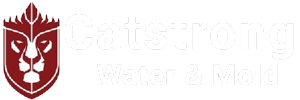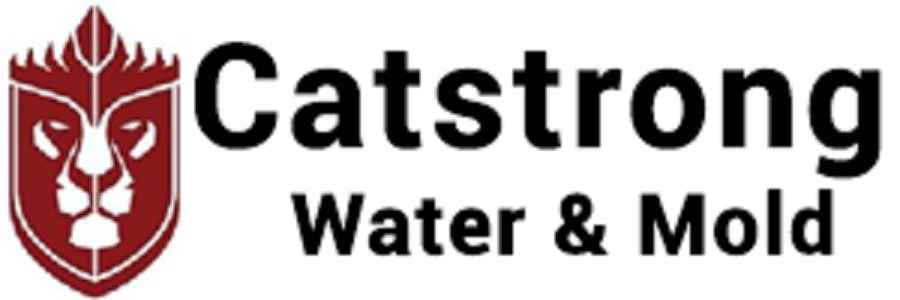Quality, Mold Inspection,
and Removal Services
We offer residential and commercial restoration services, call us today!
Give us a call for all your Mold Inspeciton and Test service needs.
When do you see mold is testing an excellent idea? Testing identifies what type of mold it is, whether it's poisonous and other characteristics. In addition, it supplies information concerning what locations of your home or organization need to be treated for mold. Mold removal typically involves removing the mold along with the materials the mold remains in. So, you prefer to remove just the impacted locations and not invest loan treating untouched locations. Furthermore, restoration is an unnecessary expense when you have actually dealt with untouched areas of your home.
Mold growth in homes and buildings can cause a variety of health problems. That's why it's important to understand the causes of mold and how to properly remediate it. This comprehensive guide covers everything you need to know about mold remediation.
What is Mold?
Mold is a type of fungus that grows in damp, warm environments. It produces microscopic cells called spores that float through the air. When excess moisture or water accumulates indoors, spores can begin growing on building materials, furnishings and other surfaces. According to the Centers for Disease Control and Prevention (CDC), there are more than 100,000 species of mold.1
Common indoor molds include:
- Cladosporium
- Penicillium
- Alternaria
- Aspergillus
- Fusarium
Mold can appear in different colors, such as black, gray, brown, orange, yellow or green. Some molds may have a musty odor. Mold growth may start out looking like dirt or stain until it spreads and becomes more noticeable. Mold can grow on practically any surface, including wood, ceiling tiles, wallpaper, carpets, drywall, fabric, insulation and paint.2
Potential Health Effects of Mold
Exposure to mold can trigger allergic reactions and asthma symptoms in sensitive individuals. Symptoms may include:3
- Coughing
- Wheezing
- Shortness of breath
- Eye irritation
- Skin irritation
- Runny nose
- Sore throat
Those with compromised immune systems may be at higher risk for infections from certain molds. Very high levels of mold exposure can potentially cause more severe lung diseases like hypersensitivity pneumonitis or chronic obstructive pulmonary disease (COPD).
The CDC states there is currently no conclusive evidence linking mold exposure to serious conditions like pulmonary hemorrhage, memory loss or muscle and joint pain. More research is needed to understand the possible health effects of mold.3
Causes and Risk Factors for Mold
Mold spores are present everywhere both indoors and outdoors. But mold will only start growing with enough moisture. Some potential causes and risk factors for excess moisture leading to indoor mold growth include:
- Flooding
- Leaky roofs
- Humidifier use
- Plumbing leaks
- Overflow from sinks, showers, bathtubs, washing machines, dehumidifiers or air conditioners
- Excess moisture in basement, attic or crawl spaces
- Steam from cooking or showering
- Wet clothes drying indoors
- House plants
- High indoor humidity
- Low ventilation
If moisture problems are not fixed, mold growth will keep coming back even after cleaning. Areas where tile, wallpaper, drywall or paneling has been soaked or remain damp for more than 48 hours may develop mold growth.
Inspecting for Mold
Start by looking for visible signs of mold or moisture. Check behind furniture and underneath carpets. Look for water stains or discoloration. Mold may appear fuzzy or slimy and come in various colors. Use a moisture meter to check for damp areas behind walls or ceilings. Pay close attention to areas with poor ventilation or humidity problems. Have a professional conduct a thorough inspection if you are unsure.
Testing for Mold
Specialized mold testing usually isn't necessary. If visible mold growth is present, you typically want to have it remediated regardless of the exact types. Mold testing may sometimes be helpful for identifying hidden mold or deciding on the proper remediation methods. Testing can check the air, surfaces or building materials for mold spores.4
There are a few different mold testing methods:5
- Air testing - Air samples are collected and analyzed under a microscope to count and categorize spores according to allergenicity and health risks.
- Surface testing - Samples are taken from visibly affected materials to identify mold species present.
- Bulk/direct testing - Small pieces of materials are analyzed to detect hidden mold growth.
- Carpet dust testing - Dust samples are collected from carpets and analyzed for mold as well as allergens.
Consider hiring a professional to conduct mold testing to get accurate results. Make sure they follow proper methods for sampling, transport, analysis and interpretation.
Mold Remediation Process
Mold remediation involves fixing moisture problems first, removing contaminated materials, cleaning affected areas and taking measures to prevent future mold growth. Here are the general steps:
- Assess extent of mold growth and moisture damage
- Identify and eliminate sources of moisture
- Remove and discard moldy materials that cannot be sufficiently cleaned
- Dry out affected areas and things that can be salvaged
- Use fans, dehumidifiers or air conditioning equipment if needed
- Carefully clean surfaces with mold killing solutions
- Paint or redecorate walls after cleaning
- Check insulation, drywall and paneling for hidden mold
- Consider encapsulating wood framing, insulation, wall cavities, etc.
- Properly dispose of moldy items
- Make repairs as needed to prevent moisture issues
- Increase ventilation and air circulation
- Install air filtration system or dehumidifier if necessary
- Apply mold inhibitors to vulnerable areas
The remediation process takes time. Expect it to take about 2-3 weeks for a small area less than 30 square feet. Larger jobs over 100 square feet may take 4-6 weeks.6
Hiring Professional Mold Remediators
Consider hiring a professional mold remediation company for large mold problems, issues in HVAC systems or hidden mold deep in building materials. Professionals have the expertise, protective gear and equipment to clean thoroughly and prevent mold from recurring. Here are some tips for finding a qualified mold remediation contractor:7
- Find a company with specific mold remediation training and certifications
- Ask for referrals and check reviews
- Get multiple estimates for comparison
- Verify they follow industry standards and guidelines
- Ask detailed questions about their remediation process
- Make sure they offer a warranty or guarantee
- Get a written contract specifying exactly what will be done
Reputable professionals should have proper licensing, insurance and worker's compensation coverage. Beware of contractors recommending excessive or questionable methods like ozone generators or fogging with chlorine bleach or ammonia, which are not effective for treating mold.8
DIY Mold Remediation
Homeowners can tackle minor mold growth less than 10 square feet themselves. Larger areas will require more expertise and equipment. Take proper safety precautions when doing DIY mold removal:7
- Wear gloves, goggles, an N95 mask, hat and protective clothing
- Work in well-ventilated areas
- Keep children and pets away from affected areas
- Contain affected rooms from the rest of the home
- bag and dispose of debris outside immediately
- Clean yourself and tools thoroughly afterwards
When in doubt, it's usually wise to leave mold remediation to the professionals for health, safety and thoroughness.
Preventing Mold Growth
The key to stopping mold is to control moisture. Here are some tips for preventing mold in your home or building:9
- Quickly fix any water leaks or flooding
- Use exhaust fans, open windows and increase ventilation
- Maintain low indoor humidity between 30-50%
- Allow airflow around furniture and walls
- Clean and dry out wet spots within 48 hours
- Make sure bathrooms, basements and attics are well-ventilated
- Use dehumidifiers and air conditioning as needed
- Increase insulation in exterior walls to reduce condensation
- Check that roofs, gutters and downspouts direct water away from the building
- Aim fans, sprinklers and landscaping away from the sides of the house
- Clean debris from gutters regularly
Practicing moisture control and good indoor air quality habits can help stop mold issues before they start. But if mold does become a problem in your home, use this guide for proper mold remediation.
References
After Mold Remediation
Once mold has been properly remediated, take measures to keep it from coming back. Monitor areas carefully for signs of moisture or returning mold growth. Make sure humidity levels and ventilation are optimal. Be prepared to act quickly at the first signs of water or mold.
Clean and maintain your home regularly to get rid of dust and dirt where mold spores could settle. Vacuum carpets, mop hard floors and dust regularly. Clean bathrooms and kitchen thoroughly and fix any leaks right away. Keep an eye out for condensation and wet spots.
Installing a central humidifier and dehumidifier system can help control moisture throughout your whole home. Use exhaust fans whenever cooking, showering or using hot water, especially with the door closed. Ventilate and air out damp basements and crawl spaces.
Check your air conditioning unit and ducts regularly for accumulated dirt, dust and moisture. Replace air filters as needed to keep air circulation clean. Have an HVAC professional clean and disinfect your ductwork at least once a year.
Consider applying mold inhibitor sealants, paints or coatings in damp areas like basements or bathrooms. Look for waterproofing products containing antimicrobials or EPA-registered biocides that can prevent mold and mildew growth.
Staying Healthy after Mold Exposure
Even after successful remediation, mold allergies and asthma can persist. Work with your doctor to manage any ongoing respiratory problems or allergic reactions.
Shower and change your clothes after cleaning or other exposure to dissipate lingering mold particles. Wear an N95 mask when doing any remaining remediation work or cleaning up residual dust. An air purifier with a HEPA filter can help capture mold, spores and other allergens.
If mold allergy symptoms continue, talk to your doctor about taking antihistamines, using nasal corticosteroid sprays or allergy shots. Keep asthma medication handy. Pay attention to local mold and pollen counts.
Eating foods rich in vitamin C, vitamin E and antioxidants can help strengthen your immune system. Probiotics may reduce nasal congestion and allergy symptoms as well. Avoid exposure to smoke, dust and other lung irritants.
With the right moisture control and quick cleanup, mold growth can be stopped before it becomes a big problem. But if you do face extensive mold issues in your home or building, this comprehensive guide will walk you through the professional remediation process for healthier indoor air.
- CDC - Mold FAQs
- EPA - A Brief Guide to Mold, Moisture and Your Home
- CDC - Mold - General Information: Facts about Stachybotrys chartarum
- EPA - Should I Test or Sample for Mold?
- EPA - Mold Testing or Sampling
- ServiceMaster Restore - How Long Does Mold Remediation Take?
- EPA - A Brief Guide to Mold, Moisture and Your Home
- EPA - Using Biocides, Disinfectants or Sanitizers to Treat Mold Growth
- EPA - Mold Prevention Tips

